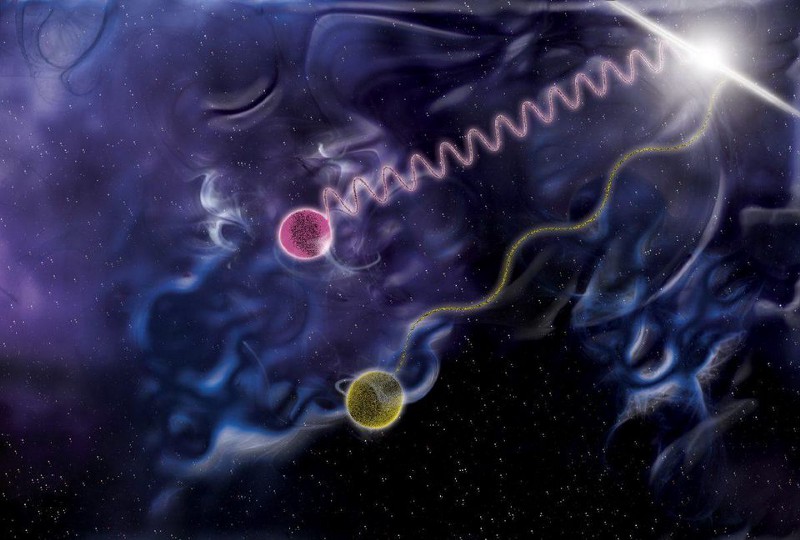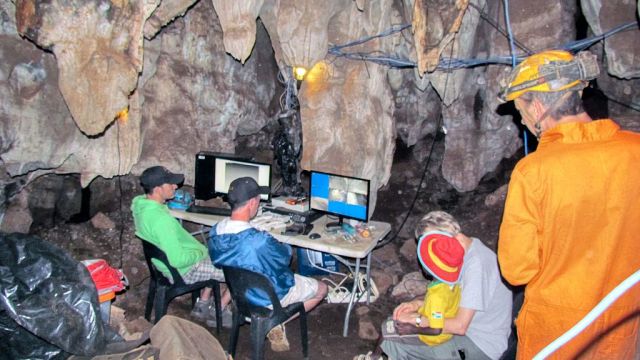If UFOs are alien spaceships, how did they get here?

- Space is really big. One light-year is roughly 32 million trips around Earth.
- UFOs are not magical. They have to obey the universe’s speed limit.
- If we are to believe UFOs are alien spacecraft, we need to figure out exactly how they can make it here.
Space is really, really big, and aliens are not magic. These are the two critical points to consider if you really want to think about UFOs as spacecraft from distant star systems. They are also the most important points to consider if you want to imagine humanity getting out of the solar system and building a Galactic Federation or (depending on your political inclinations) an Empire. The first point forces us to confront the insane distances between the stars. The second point forces us to deal with the physics problems involved in crossing those distances, even if we don’t know what their solution might be just yet.
Let’s take a leap into the unknown but keep our science crash helmets on. The question we want to ask is this: If UFOs were spaceships from other star systems, then how might they (or us or anyone) cross the great interstellar void? The question is big enough that we must break it up into two parts. This week’s column will focus on the first part — getting a gut feeling for the real scale of the void.
One light-year = 32 million trips around Earth
Astronomers measure interstellar distances in light-years, which is the distance light travels in a year and spans six trillion miles — that’s a six with 12 zeroes after it: 6,000,000,000,000 miles.
You have probably walked a mile, driven hundreds of miles, and flown thousands of miles. All this takes you only through the first three zeroes. The other nine require a major act of imagination. If you are looking for an earthly comparison for the distance a light-year comprises, it is the same as traveling all the way around the Earth about 32 million times.
Another way to understand a light-year is to consider the distance from the Sun to the edge of the Solar System. If the Milky Way galaxy is our local city of stars, then the Solar System basically constitutes the house we were born in. (Think of Earth as one room in that house.) In 2006, we launched the fastest space probe ever developed, New Horizons, and sent it to Pluto, (which can stand in as “the edge of the solar system”). The distance to Pluto is about 2,000 times shorter than a light-year. Now here’s the point to ponder: Even though New Horizons was hurtling through space at 36,000 mph, it still took ten years to reach Pluto. From that factoid, we can conclude that it would take New Horizons at least 20,000 years to cross a single light-year.
While that’s a very long time, it doesn’t even get us all the way to interstellar distances since there is really nothing out there one light-year away. You have to travel almost four times as far to reach the nearest star (Alpha Centauri). So, a journey by New Horizons to Alpha Centauri would take 80,000 years, and that is the closest possible home for UFO-flying aliens. Most importantly, note that most stars are way, way farther away than Alpha Centauri. The Milky Way Galaxy is about 100,000 light-years across. That means even our local stellar neighborhood has to be measured as thousands of light-years across (or tens of millions of years of travel time for our fastest space probes).
All of this serves to confirm that, yes, space is big. Or as Douglas Adams put it, space is “vastly, hugely, mindbogglingly big.” If UFOs really are interstellar visitors, then these are distances they must routinely cross. They are also the distances we must learn to cross if we are to become an interstellar species. (In this case, we would be the aliens.)
Even UFOs must obey the speed limit
Now, here is the big kahuna of an issue. Any attempt to cross those distances runs into a fundamental fact about the Universe: Nothing can travel faster than the speed of light. This is not just a fact about light; it’s a fact about the very nature of physical reality. It is hard-wired into physics. The Universe has a maximum speed limit, and light just happens to be the thing that travels at it. Actually, anything that has no mass can travel at light speed, but nothing can travel faster than light. This speed limit idea is so fundamental, it is even baked into the existence of cause and effect.
Now there may, of course, be more physics out there we don’t know about that is relevant to this issue. But the speed of light is so important to all known physics that if you do think UFOs = spaceships, you cannot get around this limit with a wave of the hand and a “They figured it out.” You’ve got to work harder than that.
That is our job for next week. Given these insane interstellar distances, how might we extrapolate from the physics we do understand to see how those aliens (or us in the future) could cross the cosmic void?





